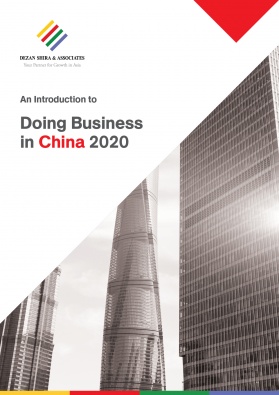China-Pakistan FTA Phase-II: Reduced Tariffs, New Safeguard Measures
- The Amending Protocol to the China-Pakistan FTA introduces a new tariff elimination schedule and will widen market access to each other’s economies.
- Known as Phase-II, the Protocol also introduces safeguard measures to protect the domestic industry in the respective markets.
- Rules of origin and trade remedies have also been updated, among other key provisions.
On December 1, 2019, the Protocol to Amend the Free Trade Agreement between China and Pakistan entered into force, making substantial revisions to the China-Pakistan Free Trade Agreement (CPFTA) first signed in November 2006. (The full text of the protocol can be found here in English and here in Chinese).
The Amending Protocol, also known as Phase-II of the CPFTA, intends to deepen trade relations between China and Pakistan through increasing liberalization of trade in goods, safeguarding mechanisms for its domestic industry, and facilitating intercountry balance of payments and electronic data exchange.
Most notably, the Protocol introduces a new tariff elimination schedule to widen mutual market access, amends rules of origin and trade remedies provisions, and adds a new chapter on customs cooperation.
In the 2017-2018 fiscal year, China-Pakistan trade volume totaled US$13.2 billion, accounting for 16.4 percent of Pakistan’s trade volume.
This round of revisions to the CPFTA expands and diversifies trade opportunities for business on both sides, while maintaining fair and equitable protection of local industry interests.
Reduced tariffs, wider market access
The protocol stipulates that the proportion of tariff lines with zero-tariff products between China and Pakistan will gradually increase from 35 percent to 75 percent in a period of 10 years as implemented by China, and 15 years by Pakistan.
In addition, both parties will implement a 20 percent partial tax reduction on other products that account for five percent of taxable items within the other country’s tariff lists.
So far China has agreed to eliminate tariffs on 313 major export items from Pakistan – effective immediately.
This includes frozen meat and seafood, dried fruit, chemicals, plastics, oil seeds, construction material, equipment and machinery, leather, auto parts, home appliances, and machinery, among others. (See full list on Pakistan’s Ministry of Commerce here.)
Pakistan has also offered China increased market access on raw materials, intermediate goods, and machinery.
Protected tariff lines made clear
In addition to the reduced tariffs, 25 percent of the tariff lines (that is, 1,760 items) have been placed on the protected list.
The industries benefiting from the protected list are: textiles and clothing, iron and steel, auto, electrical equipment, agriculture, chemicals, plastics, rubber, paper and paper board, ceramics, glass and glassware, surgical instruments, footwear, leather, wood, articles of stones and plaster, and miscellaneous goods.
New safeguard measures to protect domestic industry
Finally, revisions were made to the safeguard measures within the CPFTA to strengthen the protection of domestic industries.
Under the Protocol, to the extent necessary, tariff rates can be increased, or reductions suspended, for any product whose imports cause or threaten to cause serious ‘injury’ to the other country’s domestic industry, which produces a directly competitive product.
Compared to the previous iteration of this chapter, the new wording makes these safeguard measures more readily accessible.
For example, under the 180-day protection emergency measure added by the Protocol, domestic producers can now access the safeguard measures to suspend reduced tariffs rates without needing to first prove injury caused by the imported products.
These concessions hold ample benefits for both China and Pakistan’s trade development; it grants China access to key agriculture, textile, and engineering commodities to satisfy the needs of its growing middle class, while enabling Pakistan to improve its export competitiveness and upgrade its industrial production.
Meanwhile, China’s Customs Tariff Commission of the State Council announced it would be temporarily adjusting import tariffs on 859 commodities – at rates lower than that of the most-favored-nation (MFN) tax rate – to come into effect January 1, 2020.
This will be made in accordance with China’s free trade agreements with New Zealand, Peru, Costa Rica, Switzerland, Iceland, Singapore, Australia, South Korea, Georgia, Chile, and Pakistan as well as the Asia-Pacific Trade Agreement.
China Briefing is written and produced by Dezan Shira & Associates. The practice assists foreign investors into China and has done since 1992 through offices in Beijing, Tianjin, Dalian, Qingdao, Shanghai, Hangzhou, Ningbo, Suzhou, Guangzhou, Dongguan, Zhongshan, Shenzhen, and Hong Kong. Please contact the firm for assistance in China at china@dezshira.com.
We also maintain offices assisting foreign investors in Vietnam, Indonesia, Singapore, The Philippines, Malaysia, and Thailand in addition to our practices in India and Russia and our trade research facilities along the Belt & Road Initiative.
- Previous Article China’s Market Regulator Clarifies Recall Obligations for Consumer Products
- Next Article Can Small-Scale Taxpayers Issue Special VAT Invoices by Themselves in China?







